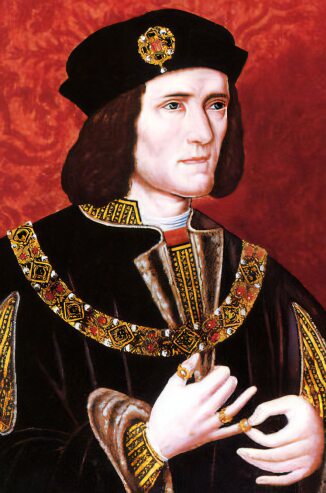 "It's him!" And with that, the University of Leicester announced the discovery of King Richard III's bones on February 4, 2013. Following DNA and skeletal analysis and genealogical research, lead archaeologist Richard Buckley unambiguously proclaimed that the skeleton discovered under a council car park in Leicester was indeed that of the last Plantagenet medieval king Richard III.
"It's him!" And with that, the University of Leicester announced the discovery of King Richard III's bones on February 4, 2013. Following DNA and skeletal analysis and genealogical research, lead archaeologist Richard Buckley unambiguously proclaimed that the skeleton discovered under a council car park in Leicester was indeed that of the last Plantagenet medieval king Richard III. Richard was killed in the Battle of Bosworth in Leicestershire, the last significant battle of the Wars of the Roses, on August 22, 1485. In commemoration of that event, 100 white roses were laid at a sundial by invited guests at a ceremony last week. Of the battle, Paul Lay, editor of History Today, writes in The Guardian irreverently that the skeleton demonstrates "the tactile brutalities of 15th-century warfare: eight wounds to Richard's head, two to his body and the postmortem humiliation of a knife to the buttocks, giving new meaning to the expression 'gettin' medieval on your ass'."
Medievalists.net writes that "Examination of the remains have shown that Richard had no kyphosis or withered arm, despite this being a feature commonly attributed to him and his face is shown to be warm, young, earnest and rather serious." Richard III was made the object of fun and ridicule by history, and the University of Leicester and the Richard III Society are keen to redress the unflattering light shined on his life by Shakespeare and the Tudors. They're hoping the remains will help retell his story.
 The Richard III Society, working with the University of Dundee, undertook the task of reconstructing Richard's face from the remains. Caroline Wilkinson, Professor of Craniofacial Identification, said, "His facial structure was produced using a scientific approach, based on anatomical assessment and interpretation, and a 3-D replication process known as stereolithography. The final head was painted and textured with glass eyes and a wig, using the portraits as reference, to create a realistic and regal appearance." Janice Aitken, a lecturer at Duncan of Jordanstone College of Art & Design, painted the 3-D replica of the head, that Professor Wilkinson created, using protrait painting techniques combined with historical and contemporary references.
The Richard III Society, working with the University of Dundee, undertook the task of reconstructing Richard's face from the remains. Caroline Wilkinson, Professor of Craniofacial Identification, said, "His facial structure was produced using a scientific approach, based on anatomical assessment and interpretation, and a 3-D replication process known as stereolithography. The final head was painted and textured with glass eyes and a wig, using the portraits as reference, to create a realistic and regal appearance." Janice Aitken, a lecturer at Duncan of Jordanstone College of Art & Design, painted the 3-D replica of the head, that Professor Wilkinson created, using protrait painting techniques combined with historical and contemporary references. Along with the skeletal remains, the medieval church of Greyfriars was also unearthed. Historical evidence shows that Richard was first buried in the Church of the Annunciation of Mary the Virgin, i.e., the Newarke at Leicester. Legend has it that in the 18th century, the Franciscans of Greyfriars "asked for permission to bury the late king in their friary church, where he was afforded a place of honour in the choir, i.e. the area before the holy altar."
Now, according to the Richard III Society, Sir Robert Burgess, Vice Chancellor of the University of Leicester and the Right Reverend Tim Stevens, Bishop of Leicester, [have] confirmed that King Richard III will be reinterred in Leicester Cathedral.
For more details, visit the websites of The University of Leicester and The Richard III Society.
[Edited 3/12/13: It's now come to light that death threats have been made over the issue of whether Richard III's remains should be buried in Leicester, or at Westminster Abbey. The decision of Leicester Cathedral still stands.]
No comments:
Post a Comment